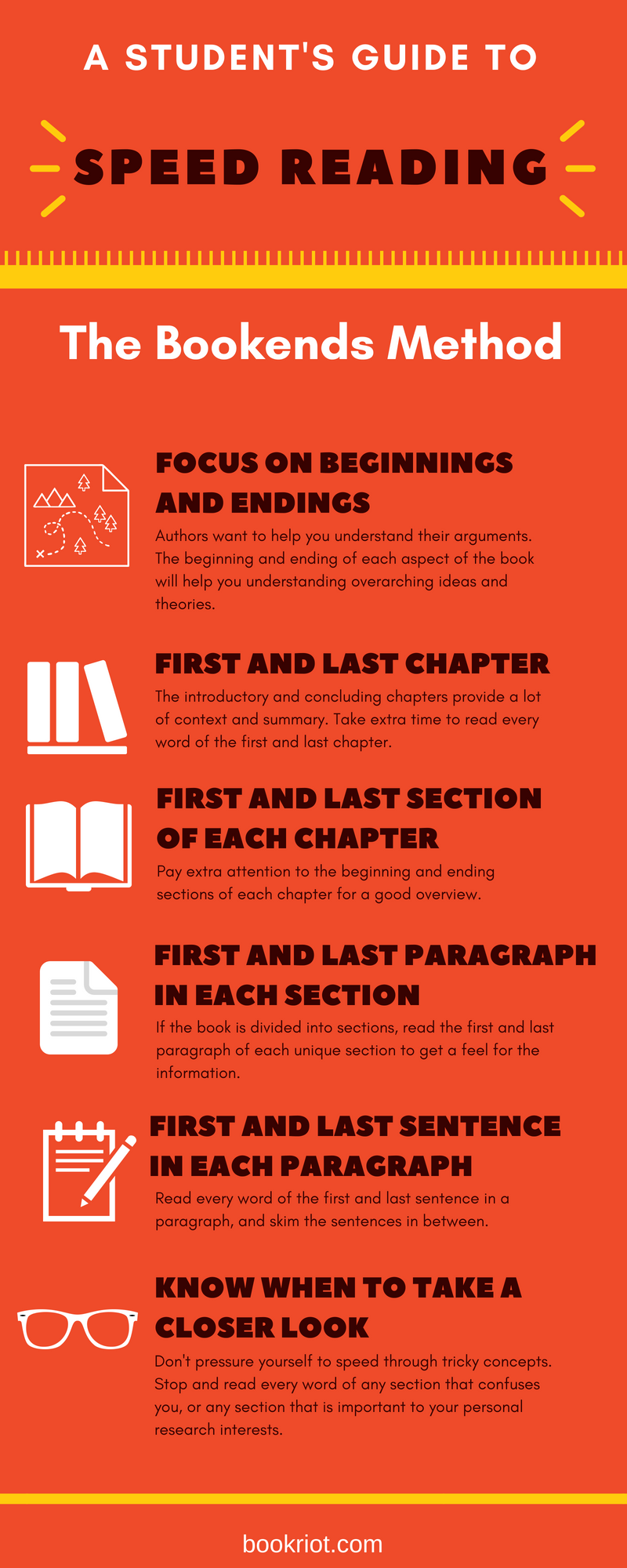
How to Read Faster: A Student’s Guide to Speed Reading
When I started graduate school, I was stunned by how much grad students were expected to read. I’ve always been a fast reader and a pro at carving time out of my schedule to squeeze in a few more pages, so heavy reading loads in undergrad hadn’t fazed me. But when I looked at my grad school syllabi and realized I had to get through at least three to five thick academic books per week, I panicked. How could I do that while also attending classes, writing lengthy papers, and still holding down two part time jobs to pay the rent? I didn’t know how to read faster while still absorbing the heavy theory involved in these academic texts.
Due to a serious case of imposter syndrome, I was terrified to admit that I didn’t think I could keep up with this much reading. Luckily, one of my classmates wasn’t so shy. On the first day of my Gender, Sexuality, and American Culture course, she boldly raised her hand after the professor walked us through the syllabus. “You’ve assigned us a lot of reading. Do you have any suggestions for how we can get through two books a week for this course alone?” I feared we were about to receive a lecture on commitment to academia and giving up sleeping and eating in order to expand our minds.
Instead, the professor was totally open to her question. “You’re all new to grad school,” he said. “I’m going to let you in on a little secret. None of your professors expect you to read every word of every book assigned. It’s nearly impossible to read that much!” I nodded enthusiastically, pleased that someone was finally getting real with us. “The key is to skim—and to skim in a calculated way.”
He proceeded to give us advice that truly saved my life in grad school. There’s no way I would have graduated (especially with a 3.9 GPA!) if it weren’t for this wisdom from Professor Heap. And because not every professor is as forthcoming with advice on skimming, I want to pay it forward. If you want to know how to read faster, please enjoy this former student’s guide to speed reading.
The Bookends Method
I like to think of this as the bookends method. The key is to focus on the beginning and the end of every component of the book. This method works best for nonfiction, particularly the kinds of academic texts you may be assigned in undergrad or grad school. However, I’ve also used it for fiction in some circumstances.
Read All of the First Chapter and Last Chapter
In academic texts, the introductory chapter and concluding chapter tend to be very useful for grasping overarching concepts. Authors will introduce what scholarship they’re building upon, what they’re contributing to the conversation, and why it’s important in the introduction. In the conclusion, they typically provide some kind of summary of what was discussed and any important closing points. Reading the first and last chapters closely will provide you with helpful context and high-level arguments. You don’t have to read the last chapter before the rest of the book. Just keep in mind that you shouldn’t skip out on it.
Read All of the First and Last Section of Each Chapter
In most academic texts, each chapter will represent a new concept or theme. Read all of the introduction and conclusion of each chapter to get an idea of what the author wants you to take away from that section. Even if you don’t catch every single piece of information presented in the chapter, you’ll still get a good idea of what concepts are being presented and how they relate to the overall argument the book is making.
Read All of the First and Last Paragraph of Each Section
If each chapter is broken down into sections, you can presume that each section presents a new concept important to the overall argument of the chapter. This makes it even easier to skim! Be sure to read the first and last paragraph of each section carefully for a high-level summary of the concept.
Read the First and Last Sentence of Each Paragraph
To make sure you’re staying on track with the information presented throughout the book, read every word of the first and last sentence of each paragraph. This will help you follow the direction of the conversation and avoid missing big shifts in subject matter or argument.
Skim the Rest
Here’s how this works in practice. You’ll read the introductory chapter closely. Then you’ll move on to the next chapter, where you’ll read the first section carefully. For the next section, you’ll read every word of the first paragraph. For the other paragraphs, you’ll read the first sentence, skim, and read the last sentence. Then you’ll read all of the last paragraph of that section. Repeat this process for each section until you get to the end of the chapter. Then read the concluding section carefully. This is how it will work for every chapter until you reach the end of the book, where you’ll read every word of the conclusion. If you come across anything that confuses you or seems important to your personal research interests, spend more time there and don’t skim.
If you’re more visual, I created this handy graphic to help you see remember these tips for how to read faster when it comes to academic texts.
I hope these tips have helped you learn how to read faster when it comes to academic texts! Be sure to share your ideas for undergrad and grad school speed reading in the comments. If you want more ideas for faster reading, check out these posts:
5 Tips for How to Read Faster Without Losing Comprehension














